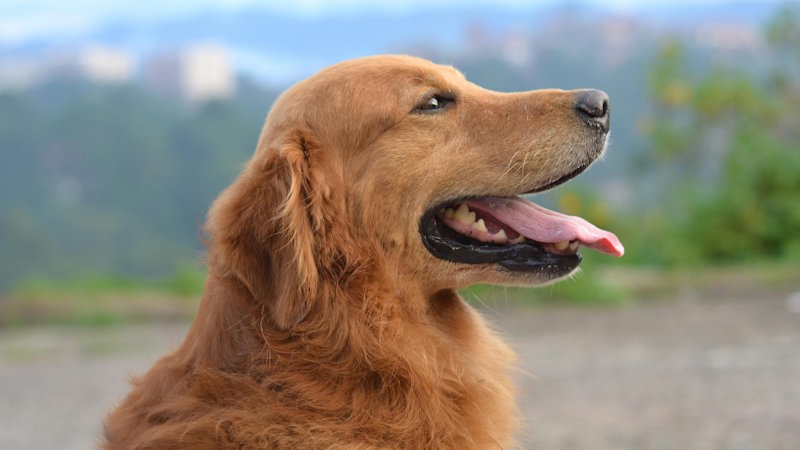
Golden Retriever dogs are more than just one of the most popular breeds—they’re a symbol of loyalty, kindness, and endless tail wags. Whether they’re chasing a tennis ball or resting their head in your lap, a Golden Retriever knows how to melt hearts in seconds.
Known for their golden coats, gentle nature, and eager-to-please attitude, Golden Retrievers make amazing companions for families, singles, and seniors alike.
This guide will walk you through everything you need to know about owning a Golden Retriever—from their history and grooming needs to training tips and health care—so you can decide if this golden-hearted breed is right for you.
Golden Retriever Dog Characteristics
Before diving into the history and personality of the Golden Retriever, it helps to get a quick snapshot of what this breed is all about. From their size and coat type to their energy levels and temperament, here’s a breakdown of the basic characteristics that define the Golden Retriever and make them such a beloved companion around the world.
| Trait: | Details |
| Breed Group: | Sporting |
| Origin: | Scotland (19th century) |
| Size: | Medium to Large |
| Height: | Males: 23–24 in / Females: 21.5–22.5 in |
| Weight: | Males: 65–75 lbs / Females: 55–65 lbs |
| Lifespan: | 10–12 years |
| Coat Type: | Dense, water-repellent double coat |
| Coat Colors: | Light cream to deep golden |
| Temperament: | Friendly, loyal, intelligent |
| Energy Level: | High |
| Trainability: | Very high |
| Good with Children: | Excellent |
| Good with Other Pets: | Yes |
| Shedding Level: | Heavy (seasonal) |
| Grooming Needs: | Moderate to high |
| Common Health Issues: | Cancer, hip dysplasia, ear infections |
Golden Retriever Dog Breed: The History
The story of the Golden Retriever begins in the Scottish Highlands during the 1800s. Hunting was a way of life for the gentry, and they needed a dog that could retrieve birds from both land and water. Most existing breeds could do one or the other—but not both.
Enter Lord Tweedmouth. He carefully bred a Yellow Wavy-Coated Retriever with a Tweed Water Spaniel—a now-extinct breed known for its water skills. Over time, he introduced other breeds like Bloodhounds and Irish Setters to fine-tune the dog’s abilities.
The goal wasn’t appearance. It was performance. But the result? A golden-coated dog with brains, stamina, and charm. Word spread fast, and these retrievers became favorites among sportsmen.
By the early 1900s, the breed crossed into England and North America. The American Kennel Club officially recognized the Golden Retriever in 1925.
From humble roots in Scottish hunting estates to therapy centers, family homes, and Hollywood screens, the Golden Retriever has never lost its original purpose—to be loyal, hardworking, and endlessly affectionate.
Golden Retriever Traits and Size

Golden Retrievers are the definition of athletic grace. They have a sturdy, symmetrical build that’s strong without being bulky. Everything about them—from their feathered tail to their broad skull—says balance and purpose.
Their most eye-catching trait? That lush, golden coat. It’s water-repellent, with a thick undercoat and a slightly wavy or straight outer layer. Some Goldens sport deeper reddish shades, while others lean toward cream.
Size-wise, they fall right in the middle:
- Males: 23–24 inches tall, 65–75 pounds
- Females: 21.5–22.5 inches tall, 55–65 pounds
They have a proud stance, deep chest, and strong neck. Their legs are powerful but well-proportioned, built for running, swimming, and leaping through tall grass.
Other key features include:
- Soft, expressive eyes: Usually dark brown, radiating intelligence and warmth
- Medium-length ears: Droop just below the eyes and frame the face
- Broad muzzle: Ends in a black nose, perfect for scent work
- Thick tail: Feathery and always wagging
Every detail serves a function. This breed wasn’t designed for show—it was designed to work. And even when lounging on the couch, a Golden’s body reflects its active roots.
Golden Retriever Temperament and Personality

Golden Retrievers are famously kind-hearted. They radiate warmth, trust, and playfulness in everything they do. These dogs aren’t just friendly—they’re emotionally in tune with the people around them.
Golden Retrievers rarely show aggression. Instead, they greet life—and strangers—with a tail wag and a goofy grin. That’s why they’re trusted around babies, kids, and even skittish adults. They know how to adapt.
At their core, they’re people dogs. Being part of a family isn’t optional—it’s a necessity. Leave them alone too long, and you might come home to chewed shoes or shredded pillows. They crave connection, not solitude.
Key traits that define their personality:
- Loyal and attached: They form deep bonds and love being by your side
- Playful and silly: Even as adults, they act like oversized puppies
- Patient and gentle: Great with children and seniors alike
- Eager to please: They thrive on praise and quick feedback
They’re also incredibly smart. That brainpower means they learn fast, but it also means they get bored fast. A Golden left without stimulation can turn mischievous.
Their empathy is next-level. Feeling sad? Your Golden will curl up beside you. Feeling joyful? They’ll mirror it with bounding energy and a happy bark.
What makes them truly special isn’t just how they act—it’s how they make you feel. Calm. Loved. Seen.
In a Golden Retriever, you don’t just get a dog. You get a companion who reads your heart better than most people do.
Grooming Golden Retriever Dogs
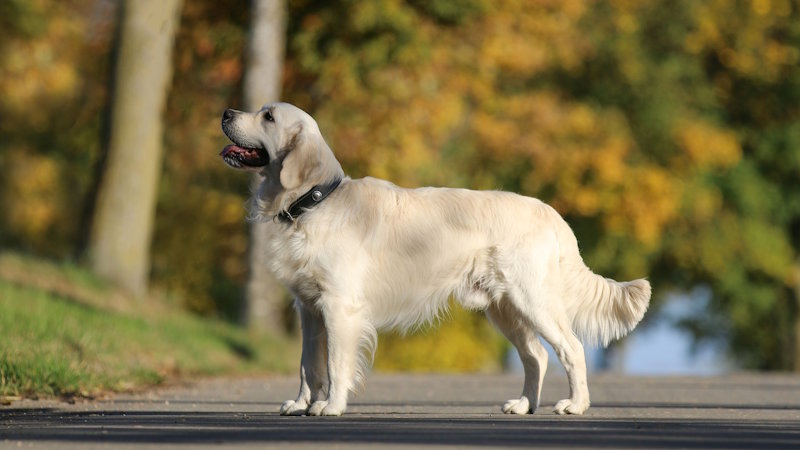
Golden Retrievers may look like low-maintenance fluffballs, but their grooming routine says otherwise. That thick, glorious coat doesn’t care for itself—and if you slack off, you’ll find fur on every surface you own.
Brushing: The Non-Negotiable
Golden Retrievers shed. A lot. Especially during spring and fall when their undercoat blows out like a tumbleweed storm.
Brush at least 3–4 times a week. During peak shedding season? Daily brushing is your best friend.
- Use a slicker brush or undercoat rake for dead hair
- Work in sections to catch mats before they form
- Don’t forget behind the ears and under the legs—prime matting zones
Brushing also spreads natural oils and keeps the skin healthy. Bonus: it’s bonding time your dog will love.
Bathing: Don’t Overdo It
Golden Retrievers have water-resistant coats. That’s great for swimming—not so great when it’s time to rinse out the grime.
Aim to bathe them every 6–8 weeks. More often if they dive headfirst into mud puddles.
- Use gentle, dog-safe shampoo
- Rinse thoroughly—leftover soap causes skin issues
- Dry completely to avoid musty smells or mildew in the undercoat
Nails, Ears, and Teeth
These parts get overlooked—but they matter just as much.
- Nails: Trim every 3–4 weeks to avoid painful cracking
- Ears: Clean weekly to prevent infections (their floppy ears trap moisture)
- Teeth: Brush several times per week to keep plaque at bay
Ear infections are a common problem in Goldens. A quick wipe with a dog-safe cleanser can save a lot of discomfort.
Final Tip: Start Young
The earlier you start grooming habits, the better. Make it fun. Use treats. Praise like crazy.
Turn grooming into a routine—not a chore—and you’ll have a dog that looks, smells, and feels amazing. Plus, your couch will thank you.
Training Needs of the Golden Retriever
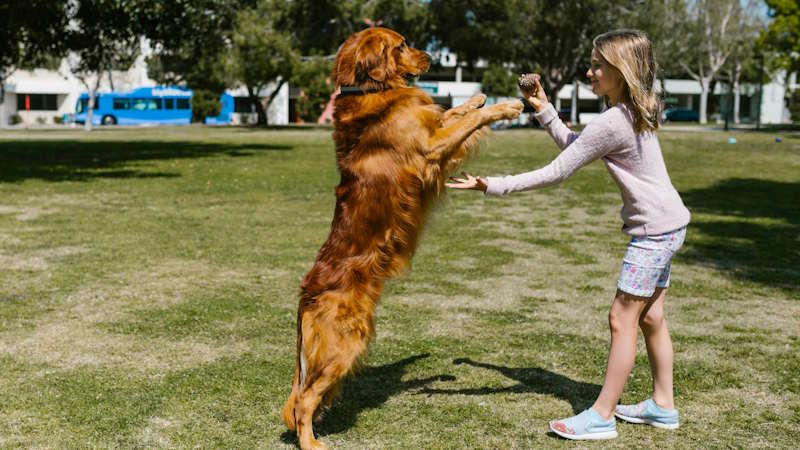
Golden Retrievers are natural learners. They’re smart, sensitive, and always eager to do the right thing—especially if a treat or belly rub is on the line. But that doesn’t mean training happens on autopilot.
Start Early, Stay Consistent
Puppies are like sponges. Start training as soon as they come home. Even at 8 weeks old, they can learn basic commands and house manners.
- Socialization: Introduce them to people, places, and other dogs early
- House training: Be patient, use a schedule, and reward every success
- Name recognition: Teach their name through positive association
Consistency is key. If you let them jump on the couch one day and scold them the next, they’ll get confused fast.
Positive Reinforcement Works Wonders
Golden Retrievers respond best to praise, treats, and encouragement. Harsh correction doesn’t motivate them—it shuts them down.
Keep sessions short and fun:
- 5–10 minutes for puppies
- 15–20 minutes for adults
- Use high-value treats and upbeat tone
They love games like fetch, hide-and-seek, and tug—use those as rewards.
Leash Manners and Advanced Training
Goldens can get excited on walks. Without training, they’ll pull like sled dogs.
- Start leash training young
- Practice loose-leash walking in quiet areas first
- Use treats to reinforce calm walking behavior
Once the basics are solid, explore advanced obedience or canine sports. Goldens shine in:
- Agility
- Rally obedience
- Therapy dog programs
- Search and rescue work
Their work ethic is strong, and their desire to connect makes them excellent service dogs.
Training isn’t just about control. It’s how you build trust, create structure, and keep their brilliant minds sharp.
A trained Golden Retriever isn’t just well-behaved—they’re fulfilled. And that’s when their true magic shows.
Health Concerns and Health Issues
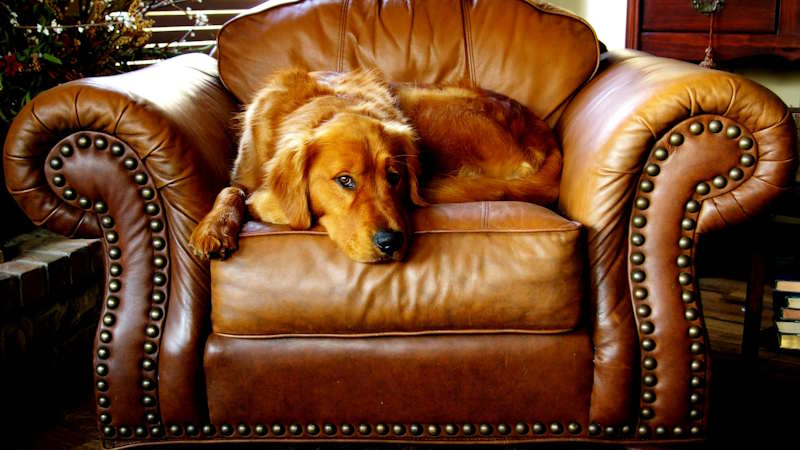
Golden Retrievers are generally robust, but they come with a few health risks that every owner should know about. The most serious is cancer, particularly hemangiosarcoma and lymphoma. These cancers are sadly common in the breed and often strike without warning. Regular vet visits, wellness screenings, and blood tests can help catch problems early, when treatment is still an option.
Another frequent issue is hip and elbow dysplasia. These joint problems can start young and worsen with age, especially if the dog is overweight or not getting proper exercise. You might not notice symptoms right away, but subtle signs like stiffness, limping, or difficulty standing should be taken seriously. Keeping your Golden active but not overworked is a smart move.
Hypothyroidism is also something to watch for. It can lead to weight gain, thinning fur, and low energy. Fortunately, it’s treatable with daily medication once diagnosed.
Their ears need special attention, too. Because Goldens have floppy ears that trap moisture, they’re more prone to ear infections. Weekly cleanings and post-swim drying help keep bacteria at bay.
Good breeding matters more than people think. Health screenings and certified clearances from both parents greatly reduce the chance of genetic issues. A healthy Golden doesn’t happen by chance—it takes planning, awareness, and a commitment to care.
Nutrition and Feeding
Feeding your Golden Retriever the right way is one of the most important parts of keeping them healthy and active. These dogs love to eat—and if you’re not careful, they’ll pack on pounds faster than you think.
Start with a high-quality dog food that’s rich in real protein like chicken, turkey, or salmon. Avoid fillers like corn, soy, or artificial preservatives. Your Golden needs fuel, not fluff.
The amount they eat depends on their age, weight, and activity level. Puppies need more frequent meals—usually three to four small portions a day. Adult Goldens do best with two measured meals. Free-feeding is a recipe for obesity, so use a schedule and stick to it.
Keep an eye on treats. They’re great for training but can quietly add hundreds of calories. Limit them to no more than 10% of their daily intake.
Hydration is key, too. Fresh, clean water should always be available. If your Golden is active, especially during hot months, increase their access and monitor for signs of dehydration.
Supplements like glucosamine or fish oil can support joint and coat health, but talk to your vet before adding anything to their diet. Nutrition isn’t just about what they eat—it’s how their body uses it. A well-fed Golden Retriever is a healthier, happier companion.
Lifespan and Welfare of the Golden Retriever Dog
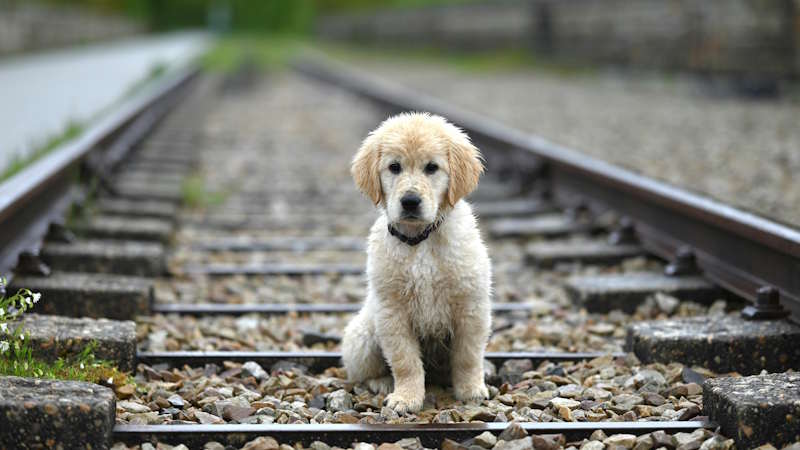
Golden Retrievers typically live between 10 to 12 years, though some reach their early teens with excellent care. Their lifespan may seem short, but how they live matters just as much as how long they live.
To give your Golden a great life, focus on three core areas: physical health, mental stimulation, and emotional connection. These dogs need daily activity—not just a quick stroll, but real exercise. Fetch, swimming, or long walks are ideal for burning energy and keeping their joints moving.
Mental stimulation is equally important. Golden Retrievers are thinkers. Interactive toys, puzzle feeders, and short training sessions keep their brains sharp and reduce boredom-based behavior like chewing or digging.
They also need emotional support. Goldens don’t thrive in isolation. They want to be near you, part of your day, even if it’s just lying under your desk while you work. Neglecting their need for affection can lead to anxiety and depression.
Routine vet visits, vaccinations, parasite prevention, and early screenings can also extend their healthy years. Your Golden Retriever gives you unconditional love—caring for their body and spirit is how you return the favor. Long life starts with daily choices.
What Makes Special the Golden Retriever Dog Breed
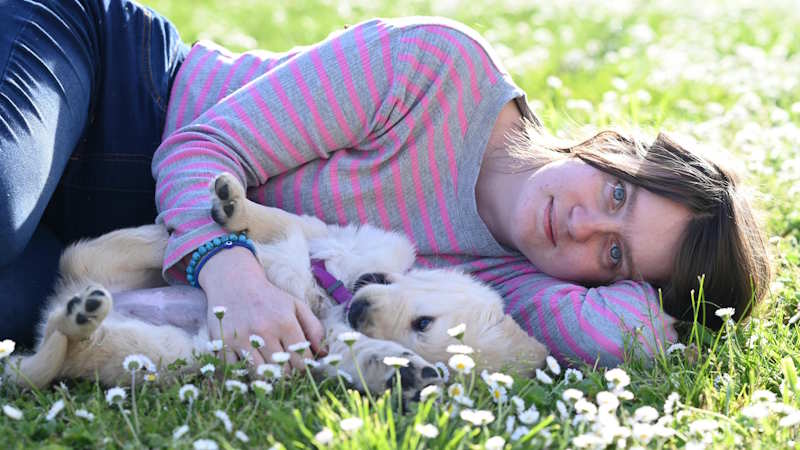
Golden Retrievers don’t just live in your home—they live in your heart. What makes them so special isn’t one thing. It’s everything combined.
They’re emotionally intuitive, almost to a fault. Your Golden will sense when you’re sad, anxious, or simply need company. They won’t ask questions. They’ll just be there—quietly resting their head on your knee or nudging your hand until you smile. It’s like they’re wired to love without conditions.
This breed is also famously adaptable. They can be energetic jogging partners or calm therapy dogs in a hospital room. They shift gears based on your energy, not theirs. That’s rare in the dog world.
Golden Retrievers are also brilliant. They’re capable of learning complex tasks, often serving as guide dogs, search-and-rescue workers, and emotional support animals. But they balance that intelligence with kindness—not arrogance.
And let’s not forget their joyful spirit. A Golden Retriever will wake up every day thrilled just to be alive, tail thumping against the floor, ready to face the world with you.
They’re not flashy. They don’t need to be. Their greatness is quiet, steady, and constant. What makes them special? They don’t try to be. They just are. And that’s what makes sharing your life with one feel like a gift.
Summary

Golden Retrievers are more than just pets—they’re loyal companions, gentle friends, and constant sources of joy. From their silky coats to their soulful eyes, every part of them reflects warmth and trust.
Living with a Golden means committing to their needs. They’re not low-maintenance, but what they give in return is unmatched. With the right care, they thrive—and so does everyone around them.
Here’s a quick recap of why Golden Retrievers are truly one of a kind:
- Friendly and patient: Ideal for families, kids, and seniors
- Highly trainable: Excellent in obedience, therapy, and service work
- Social and affectionate: They need to be part of your daily life
- Playful but gentle: Energy without chaos
- Sensitive and intuitive: They understand your emotions better than most people
They’re happiest when they’re with you—on walks, at the park, curled up on the couch. Loneliness doesn’t suit them. Love does.
Owning a Golden Retriever isn’t just about having a dog. It’s about welcoming a true companion into your world. One who asks for very little but gives absolutely everything. If you’re looking for a breed that embodies kindness, loyalty, and joy—look no further. You’ve found it.